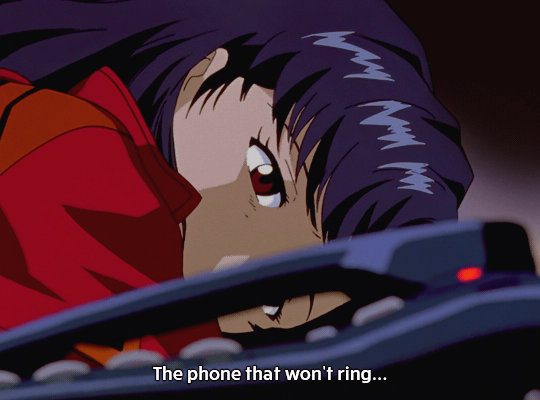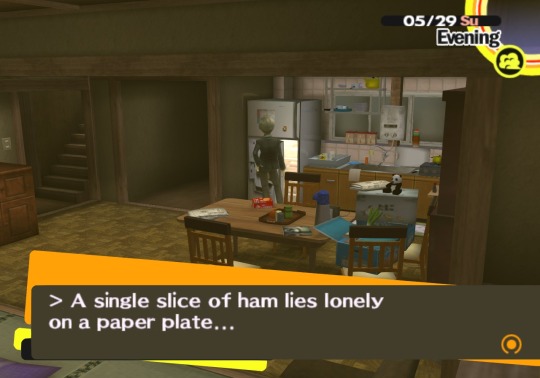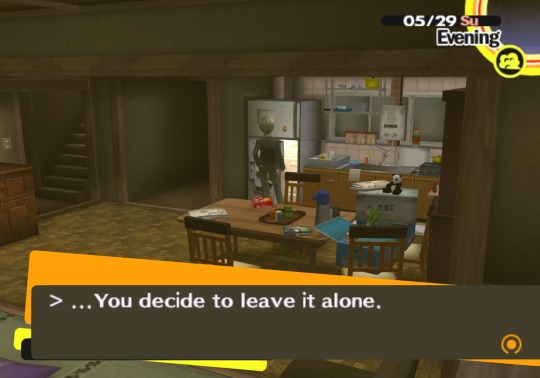Text
Monogatari: Themes of Self-Help
It’s okay to ask for help. It’s okay to rely on others. But the only one that can save you.. is yourself.
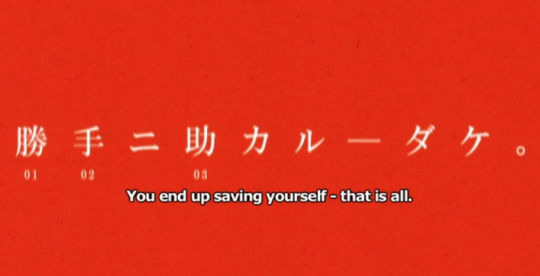
That is the ultimate statement I feel Nisioisin wanted to make with his hit series, Monogatari. For those of you that have read the novels, or watched the show, you’ll see this theme a lot. From being outright said, to more subtly hinted in the very structure of every arc, this motif of self-healing is the ultimate thesis of our beloved show.
At first, Monogatari may not necessarily come across as a series about mental health issues, but I believe it is. It’s not the first to delve into this territory, but It is one of the more unique ones, in that it actually has a message. Take a series like Tokyo Ghoul. While the manga can be a really interesting take on mental health issues, Monogatari not only deals with the same themes of depression, isolationism and self-preservation, but actually gives advice on the matter.

Koyomi Araragi has vampiric powers, enough to the point where he could help people physically in ways others can’t. In simple terms, he could save people, much like how a superhero could. However, you’ll notice in the series, this never happens. He can remove someone from physical harm, but that doesn’t ever solve the larger problem. Just like in real life, the emotional strain a person suffers takes far more to heal than any physical wound. Fear, or distress can be a heavier burden than the physical pain that accompanies it. Koyomi acknowledges this himself, stating multiple times, he can’t save someone, they can only save themselves.
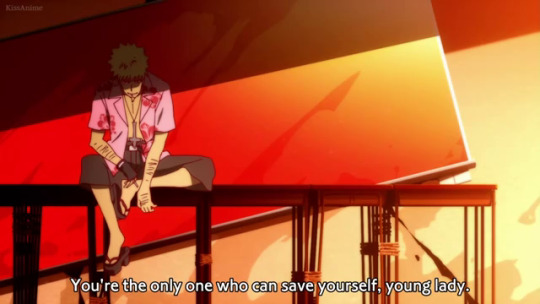
But what does that mean? It’s easy enough to say something like that, but anyone who’s struggled with mental health issues knows just how difficult that is to come to terms with. Some things aren’t so simply put into words. Thoughts, especially negative ones, can be intensely hard to comprehend or confront. They become even harder to express to others. I feel as if even the author knows this, often choosing to portray a character’s problems as monsters and aberrations, instead of through lengthy dialogue or flashbacks. Take Tsubasa and Her aberrations, the Tiger being her innate anger and the feeling of ‘schadenfreude’, or Cat, who’s the middle ground between the persona/front she displays to others, and the desires of Tiger. But at the same time, this is never directly stated, instead inferred by the audience, as well as through how other characters perceive it. No character really sits down and explains exactly what their issue is in length, many other series often choosing instead to just outright state it, or have completely non-subtle displays of common symptoms of a condition.
Negative thoughts and mental health issues aren’t always as simple as words, they’re ideas. Pictures, images, actions, fleeting thoughts that are often hard to grasp, hard to explain. They can feel like an ocean that you’re drowning in, one that everyone else seems to be able to breathe in, until you realize they’re not in the same ocean as you.
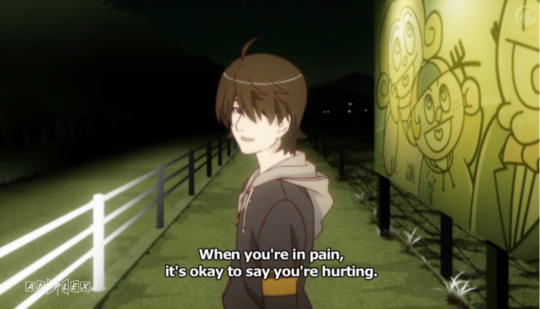
The author understands that, not even trying to describe a person’s suffering directly, at least not from their perspective. But he also understands that the person who can save you, the person that helps; is yourself. It’s fine to rely on others, it’s fine to ask for help, people can assist you, but ultimately, the person that holds you back is yourself. Taking the example of Tsubasa for example, her resolution comes not from Koyomi defeating her aberration, but from her confronting the fact that it is a part of her, that she needs to look at the bigger picture. She developed as a person, in a way that no medication or physical action could.
Which sounds almost blunt, but then again, Nisioisin isn’t really a stranger to being straight up and a little controversial. Like when Oshino and Araragi discuss whether or not Tsubasa’s abuse is justified or not, when looking from different perspectives. But I think the author finds a perfect balance between relying on external and internal support in this case. Araragi is always there for her as a friend, he frets and stresses over her. He is the stepping stone that helps her to realize she can be herself around him, that she doesn’t have to hide behind a persona. This sets her onto the path of self confrontation, which ultimately resolves in her becoming happier and more resolute.

This is even more obvious with other characters. Hitagi is a stand out for this. She was a character who was burdened by the past, a character who was always carrying trauma. Her whole arc deals with her denying the bad in her past, which led to her not being able to see the good in her future. Again, Koyomi isn’t the one that saves her, she ultimately has to confront herself, and realize that the past doesn’t make you who you are, and even with the problems that existed then, there was still happy memories both then and to come. Your past doesn’t decide how the future plays out. She has the confrontation with the con-man, but meeting Araragi helps her come to terms with the fact that there are completely normal, good men too. But she comes to that realization on her own, with the assistance of Araragi, and not because of him solely.
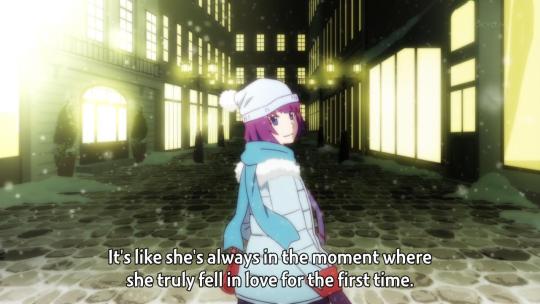
But I think one of the best, more subtle arcs that covers this- is Hanamonogatari. This arc doesn’t even feature our main protag, best boy Araragi, and yet the story is still very similar in ideas it has. The theme of it, is wishes. But more specifically, how wishes aren’t necessarily something that just comes true, instead that even just having a wish will set you down the path towards completing it. I think that’s a very sweet message to send, that even just having a goal, whether it’s unrealistic or not, will set you on the path to achieving it. The idea that if you really genuinely wish for things to change, you will ultimately set them in motion to change through your own power.
That if you want to feel better, to overcome whatever it is you may be struggling with, look inside yourself, because you are far stronger than you think.
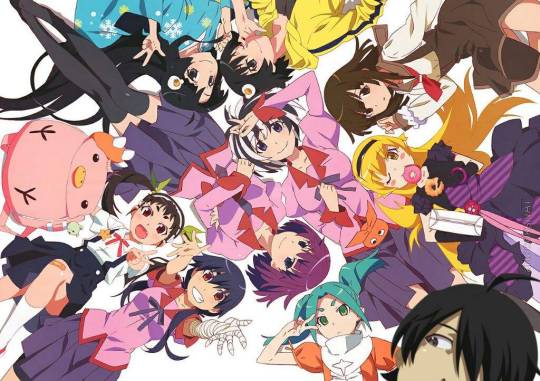
It’s just little things like this that make me love this series, and why it’s probably my favorite. These little ideas and messages that are so prominent in the series, that leave a really profound meaning with you.
But that’s it for now guys. Sorry this is so rough around the edges compared to my other pieces, but thank you for reading nonetheless. I plan to post fairly regularly again, at least once or twice a week, and I hope you all stick around to see that.
Remember to take care of each other, and for anyone who reads this and would like some support themselves, feel free to message me.
Saki~
110 notes
·
View notes
Text
Me: I want to start posting again!
The three followers I have:

6 notes
·
View notes
Text
Star Watching Dog - Tragedy and Love through the eyes of a pet.

The opening pages of Hoshi Mamoru Inu sets the tone for the very short series straight away. We’re greeted with a gorgeous art work of a broken down car in a field, while investigators state that within the car, the corpse of a man, dead for a year, and the corpse of a dog, dead for several months, have been found. We’re told straight away the fate of our two main characters, “Happy” the dog, and “Dad”. This isn’t a spoiler, this is the opening scene of the series, what we start with and finish with. You’re told up front, this isn’t going to be a happy ending.
And yet, what I find so strange about this, is that this isn’t sad. This isn’t death in the tragic sense. The artwork is gorgeous and clean. The field is beautiful and the car has faded, worn down by the time it has spent in the field. Much like the memory of our protagonists over the course of the series.
For those of you that haven’t read it, Hoshi Mamoru Inu (Star Watching Dog) is a really amazing short story, that literally everyone should go read. Being a pet owner myself, there were multiple scenes that had me sobbing like a child, and even recounting the story to my girlfriend later that day, I began sobbing uncontrollably in front of her again. This story just hits you with all the feels in all the right ways. When you’re finished, despite being a very digestible 6 chapters, you’ll feel like you’ve been on a journey.
To give a brief plot summary, we follow “Happy” the dog and his owner, simply referred to as Dad. The story begins with Dad getting a divorce and setting out on a cross country road trip to the south, taking whatever belongings he has and Happy, before setting out in his little car. From there, they face hardship after hardship, before reaching the conclusion of their already foretold deaths.
So let's talk about why I loved it so much. Why did a simple story about a man and his dog, hit me so damn hard, and why am I suddenly raving about it on Tumblr?
Well first of all, there’s no pissing about. We’re told straight away, both of our main characters are going to die. We don’t know how or why. Just that they have died somehow. The premise is set up very simply, and we’re told within seconds “Hey. It’s going to be this type of story.” I love this honestly. Knowing how the story will end is all the more tragic, since it makes the journey all the more heartbreaking. Seeing the good times is a lot harder when you know everything will end up poorly for everyone.
And the series pulls it off so well. SO WELL.
Watching these two set out on their optimistic journey was nice, but there was always this ever growing fear, that the events shown in the first pages will come about. It’s less of a question of “will things be okay?”, and more of a “When do they go awfully wrong?” Which is it’s own kind of suspense. When the tragedy does strike, it’s set up well enough to where it’s still powerful, heartbreaking and tragic, but not BS. The author doesn’t pull a fast one on us, and especially reading it a second time, the signs are all there, to the point where it actually goes in the opposite direction, and the author literally flags you down and tells you everything will go wrong and how.
The story handles this well. There isn’t an incredibly deep meaning to be had here. It’s not quite the sort of story where you can break it down, it’s just a story about a man, his dog, their bond and the people they affect on their way through life. It’s very tragic, but sweet and uplifting. If I had to find a message in the story, it’s just one of, treat your pets well. Treat your family well. Make sure to show love to the things that are precious to you, because you won’t have them forever. Which I’ll come back to in the end.
And while I could probably gush about this series for hours, for the sake of Brevity, I’ll just talk about my two favorite aspects of the series. The first is perspective, while the second is how the story handles all the characters that are affected by the life of Happy and Dad.
First of all, the series plays a lot with perspective. For the first half while our characters are alive, we follow Happy, and see the world through his eyes. From his adoption to death, we watch the world as he sees it. Which is interesting as he doesn’t understand a lot of things that we would. He monologues internally like a young child, and he doesn’t get the horrors of the world. He’s optimistic about everything, which makes it even more heart wrenching when things go wrong.
To elaborate, I’m going to have to go into spoilers briefly. You’ve been warned. The series isn’t incredibly plot heavy, so it shouldn’t matter too much, but still. I really recommend you go take an hour or two and read this before you continue onwards.
Early on, we get a scene where Dad buys a pair of sunglasses. At the time, nothing is thought of it, he mentions they’re just a fashion statement, yet doesn’t really take them off until the end of his arc, where it’s revealed that he now has (what I presume to be cataracts) in his eyes, meaning he’s genuinely gone blind. And then it clicked with me. This was foreshadowed, outright even said, but as a reader, I dismissed it because Happy dismissed it. I didn’t understand because he didn’t understand.
Suddenly several more panels made far more sense. For example there’s one scene where he goes to a restaurant by the sea, and just sits and eats for several hours. He attempts to take the Dog with him, but is refused entry on account of no pets, but then claims he is blind and it is his guide dog. We dismiss this as lying, due to the fact we’ve been shown he just doesn’t want to leave happy alone. Happy even dismisses this, not really understanding why Dad just sat there for hours watching the sunset. But then it clicks, that he was genuinely going blind. He really did need happy to guide him, and the sunset was him coming to terms with losing his sight. Much as the sun sets on another day, another chapter in his book of life ends. Past this point, his vision is almost entirely gone.
That makes the last panel of him, just gazing up at the sky, the starry sky, as he passes away peacefully, all the more powerful. He mentions the sky is full of stars, but one glance at his eyes reveals they’re white and clouded over. He can’t even see them properly. A tragic moment, since the sky is genuinely gorgeous, but he’ll never see it again. Almost as if that’s where the title comes from. Star watching dog, a dog that gazes at the stars, even knowing that it can never reach them.
What drives this home is Happy’s reaction to this. He doesn’t understand his master is ill. He doesn’t understand his master has just passed away, even though we as an audience do. So seeing him try to remain optimistic, trying to find food and survive, as well as still trying to communicate with the corpse, is so heartbreaking. This was where I sobbed especially fucking hard. I was like a child. Happy, in his final moments, wishes to be reunited with his owner, curling up into a ball, before slipping away into a dark abyss, waking in the field of flowers him and his master crashed into, before reuniting with Dad, and stepping out into the field at the end of the story.
It’s not a happy ending, not by a long shot, but seeing it portrayed in such an optimistic way, makes it so hard to read. Happy, doesn’t understand any of this, so watching him struggle on, knowing the futility of his actions, the dramatic irony in the situation is heartbreaking. Making the story all the more powerful in turn.
But this happens around 3 chapters in, with the other half of the story being what I liked even more than this.
For the second half of the story, we follow an investigator looking for clues to do with the death of the protagonists, an old lady who adopts Happy’s brother and a young boy who was helped out by Dad in his story. Which all worked out to make the story even stronger, as it shows the effects we have on those around us in our lives. The detective is especially interesting, because we see the opposite of Happy. We see how humans see their pets, instead of the other way around. And that view is distressing and almost nihilistic. While Happy only saw the best in his owner (who was set up to seem kind of like a dick), the detective only found his own pet he had as a child, annoying and obstructive. He couldn’t be bothered to deal with it, and only lashes out at it in annoyance, providing an interesting contrast between our main characters and the opposite end of the spectrum. Only after studying Happy and Dad, does he begin to regret his actions towards his dog, and reflects back on his life and what he’s done. It’s a rather emotional scene, a man coming to terms with the fact that he now has all these regrets, it was very genuine and sincere, a stage that we’ve all as humans gone through at some point. I wish I did that different, or this that way. We all have thought like that. But this change and sudden reflection is only brought about by the influence of Happy and Dad.
The contrasting viewpoints, really hammers home the relationship between the Dad and the Dog, as we've shown it was truly something special, but also that pets are a really wonderful thing. They’ll support you and love you forever, they sense your sadness, and will share in your happiness. No matter how you treat them, they will always love you, because they are just as important as the people around you. A pet isn’t a Christmas gift or some sort of toy. They’re family too. And just like family they might one day disappear from your life.
But this has been going on for long enough, I’ve said my peace, I don’t want to ruin everything in a series and if reading this has interested you at all, I highly recommend reading the series itself. It’s very short, just 6 chapters, taking no more than an hour or two to read, but it’ll stick with you for your entire life.
I just want to close things out with a quote from the series.
“What did I do for my dog? I should have played with him more… I should have taken him for more walks. I should have let him go along guard rails, curbs and telephone poles without pulling too much, so he could sniff them until he was happy. I should… Given him more love without being Scared…”
That’s all from me for now though, please take care of yourselves guys,
Saki~
2 notes
·
View notes
Text
The Shadowed World Of Monogatari - Narration [Part 2]
For those of you that haven’t read the first post, I suggest you go do that since this is a direct continuation of that. You can find it Here.

To summarize, I talked about how the world of Monogatari feels incredibly empty and lonely at times, with many scenes being devoid of literal life. I attributed this to Koyomi’s ignorance of the world around him, and how his personality meant he no longer pays attention to the world around him. If you tell yourself you can’t see something, eventually you’ll start believing it. If you stop looking at people, those people will eventually disappear from your sight.
Here and there in the post, I mentioned that while initially it seems like this is just an artistic choice, characters such as Kanbaru and Nadeko show this isn’t the case, with a sudden change in how the world is shown through their eyes in each of their respective arcs. Why is that? Why do we go from an empty world to a shadowed world to the colored world? Let’s talk about it.
For this instance, I’ll be talking about Nadeko. Sengoku Nadeko is scared of people. She’s a timid girl, shy and quiet. She hides like a snake, coiled in the grass in an attempt to avoid confrontation. Throughout her arc she constantly victimizes herself, using her cute looks to avoid any danger or real sense of responsibility. Other characters comment on this, mentioning that she’s constantly using her charm to avoid the reality, as well as being able to avoid any and all confrontation. One of her defining traits it;
She’s always looking at the ground, hiding her face in her bangs.
You’re probably asking at this point; “But Saki, how does that affect the world design and the characters within it?!” Well, for this I’m going to reference another series. A lot of you have probably Watched, some of you read “A Silent Voice”, It’s a fantastic series that everyone should go at least watch. Within the series, the main Character struggles to look people in the eye, many of the shots in the film are framed so you can only see the legs. When he does look up, a large X is plastered across people’s faces, signifying they can’t be trusted. (This is an incredibly simplified breakdown of it, please go watch that movie, or read it. It’s top tier).
Sengoku Nadeko is almost the exact same. Within Otorimonogatari, one of the first things we notice, is that there are people in this arc. Wild, I know. Nadeko first sees her Teacher, who we can only really make out from the neck down. His upper torso and head are shaded, much like the crosses from “A Silent Voice”. Nadeko can not see his upper half, as she is too scared to directly look at him. She cowers away in fear, she hides behind her bangs and looks down. This is the first signs of her serious social anxiety. She can’t even look someone in the eye, instantly wanting to flee when confronted about something.
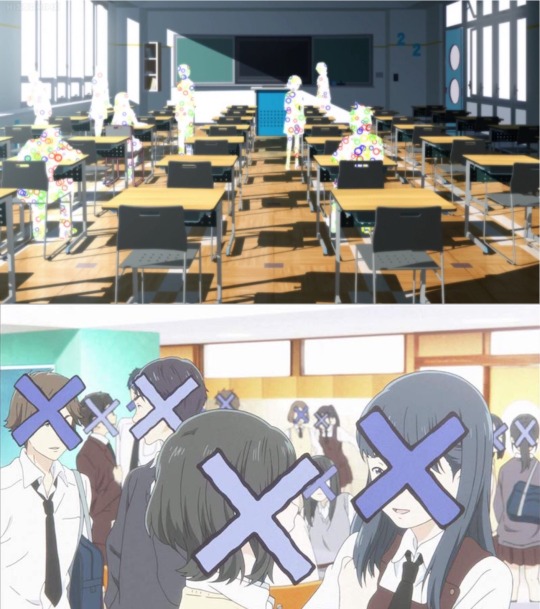
But it doesn’t stop there. She later enters her classroom to another out of place scene for the series. There are people in there, a normal class-full, contrary to Koyomi’s constantly empty classrooms and halls. She can see these people, but- with the caveat that they’re all silhouettes, with strange colored rings floating within each of them. Which is even more of a tone shift, since she could almost clearly make out the teacher when she was confronted by them.
So why is this? Why can she see people, but only make out specific ones? Well, there’s two factors to it. “The Norm” and Nadeko’s view of the people around. When you think of Japan or most schools with stricter policies, you’ll notice there’s a lot more uniformity, a lot more order than many other places (not to say that other places aren’t orderly). Everyone wears the same uniform, the same clothes, Most people will have similar hair cuts and colors, most will carry similar bags and follow the standard dress codes. Often, people rebel in their own little ways, phone charms, bag designs, makeup, piercings etc, but even these are the exception and not the norm. Hence, the silhouette being the uniform, the natural order, with the small circles being the individual quirks and unique aspects.
That’s exactly how Nadeko sees these people. She’s aware they all have their individual perks and quirks (trademark that one), but she’s more aware that on a larger scale, all these people are the same. They look the same, dress the same, act the same. She even considers them to all feel the same bitterness towards one another after the whole Kaiki situation. This mixed with the fact that she can’t even look at people directly, I imagine to her, it’s just a world of silhouettes and fakes.
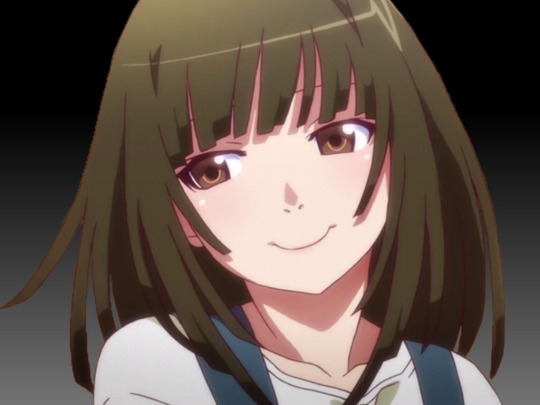
But obviously there are exceptions to this rule. She sees many of our main characters, mostly out of respect, but I imagine it’s also partly to do with the fact they’re related in some way to Koyomi. She sees Ougi clearly, having only met her once, same with Shinobu and Senjougahara, since they all have something to do with Koyomi. Replace this with her teacher, someone who she respects but also lowkey hates due to him pushing responsibilities on her, she can only see his body clearly. Finally we have the students, who she cares not about, seeing them not as individuals or people she can trust, but just an entity she has to live alongside.
I think that makes her character very interesting and both complementary and contrary to Koyomi’s outlook. He sees no one because he chooses to be ignorant of the world around him. Nadeko however, is more aware than Koyomi, she’s far more perceptive, and in being so she’s become disillusioned with the world and the people in it. She’s not quite as nihilistic as Koyomi in thinking that people have no worth, instead she is too anxious to find that worth in people. She’s scared of judgment and confrontation, much like how Koyomi is scared of emotional attachment.
So there’s this running theme of anxiety and fear leading to isolation. For Koyomi, it’s the fear of losing something. For Nadeko, it’s the fear of judgment and confrontation. Which is why their world’s are both so similar and different at the same time. One sees no-one but the exceptional, while the other sees no-one as exceptional.
And to me- That’s incredibly poetic.
While I’d like to stop there, we still have the matter of Kanbaru to discuss, however, that’s a discussion for another day, and I’ve said my peace here. I hope you guys enjoyed reading this, and I really appreciate all the support you’ve been showing me over the last few posts. I love writing stuff for you guys, so I’m really happy you guys love my written stuff too. Other than that, Look forward to Kanbaru’s discussion to tie these together, as well as more written and edited stuff on all your favorite shows.
You Guys Take Care Of Eachother,
Saki~
#monogatari#bakemonotagari#sengoku nadeko#araragi koyomi#a silent voice#otorimonogatari#shinobu oshino#anime#nisioisin
90 notes
·
View notes
Photo
Some hype to tide you over before the next post kiddos.

19K notes
·
View notes
Note
Thank you for answering my question ^^ (I’m the previous anon.) I’m new to the series! I was just saw that he kissed Shinobu with no hesitation or guilt, and wondered if he felt no like that cuz Senjougahara is comfortable with his actions. I know most people see it as cheating, but their relationship seems so stable that they’re not very concerned about it. I like Araragi a lot and find him interesting so I wanted to understand his relationship with Gahara-san ^^
No need to thank me! I love talking about the series, so I’m really glad I got a chance to answer your question! I think one day I’ll turn it into a full on post like my other stuff.
Other than that, feel free to ask me anything anytime, thanks for the support;
Saki~
1 note
·
View note
Note
I’m really confused about something. I know Senjougahara and Araragi are dating and very happily together—but Araragi has kissed other girls (Shinobu and Onoki) whilst Senjougahara has seemingly had sexual feelings towards Hanekawa and has acted upon them (with consent!). Is Senjougahara okay with an open type relationship? Are either of them legitimately jealous? I just don’t understand how their relationship works; I love both of them & them together, i just dont get if there’s jealousy or not
That’s a pretty good question. It’s definitely a little Jarring when one minute Koyomi and Hitagi are ‘lovey-dovey’ and the next, Koyomi is kissing a chick and Hitagi is making moves on his friend.
Here’s my take on it; It’s a mixture of jealousy and trust. It’s a strange level of commitment where they trust each other enough to where they almost don’t care what the other does.
Early on in the series, towards the later half of Bakemonogatari or the beginning of Nise (Sorry it’s been a while), Senjougahara confronts Koyomi when he’s on his way home from Kanbaru’s house. She pins on the ground and everything. I believe she mentions that she’s aware of him constantly being around other girls and hints at a level of jealousy. But she settles for threatening him if he ever actually cheats. This establishes that there is a little jealousy and fear there, but she trusts him enough to make the right choices.
When it comes to the actions that Koyomi takes and how he’s rather forward and ‘touchy-feely’ with a lot of girls, yes most would consider it cheating, I certainly don’t approve, but I think Hitagi is okay with it as that’s not cheating to her, if that makes sense. She probably doesn’t see this as cheating, since her boundaries are different to ours.
There’s also the fact that she doesn’t actually know about these events. I’m sure she wouldn’t be happy if she did, but she’d most likely chalk it up to him being a raging pervert and belittle him as a result.
As for Hitagi, I don’t think she’s actually romantically or sexually interested in Hanekawa. Whenever she lowkey flirts with Hanekawa and even in Nekomono when she showers with her, I feel as if that’s when she’s genuinely jealous. At the end of the day, she’s still a woman/girl. She gets jealous and is most likely insecure about her body. Wanting to see Hanekawa’s body is more of her trying to compare them, she hopes that maybe it’s not as attractive as she thinks, making herself feel better in the process (I’m assuming you’re referring to the shower scene here).
But that’s a little far fetched. Ultimately, I think It’s not an open relationship as per say, but a very trusting one. Both Hitagi and Koyomi rely on their feelings for eachother over the physical actions they each take.This is what I meant by Hitagi’s definition of cheating is slightly different, to her, it most likely means developing feelings for another person. Yeah and I think that’s all it really is, at least to me. It’s not necessarily a relationship I could see myself having, but they prioritize feelings over all else. Koyomi didn’t love Shinobu or Onoki when he kissed them, so I don’t think she would’ve classified it as cheating.
But then part me also believes that Koyomi is just a pervert and Hitagi is a little Bi. You’re right she does show interest in other girls, both Hanekawa and implied with Kanbaru. So take it as you will, but I just think ultimately no matter which it is, both Hitagi and Koyomi trust eachother and love eachother enough to not consider the other’s acts cheating. That’s just how their boundaries work.
(Secretly though, Senjougahara is gay and Koyomi is a raging pervert and that’s all that counts).

Thank you for the question, I really appreciate it, it was fun to think about this. I might even consider making a post about this! I hope this helped you out, or atleast gave you something to consider.
Saki~
5 notes
·
View notes
Text
The Empty World Of Monogatari - Narration [Part 1]
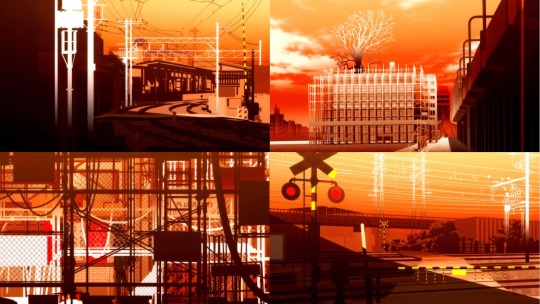
Have you ever been watching Monogatari and thought, “Man, this world feels so empty?” When the story is following Koyomi, there’s plenty of shots and scenes with no one. Throughout the series, the only people we see is those who are close to Koyomi; our main and supporting characters. Which, granted there’s a lot of them, but then other shows have people constantly walking the streets even just as extras. Take the eDgY scene from Tokyo Ghoul at the crossing, Persona’s intro cut-scene- even RWBY’s shadow people of season 1. Monogatari never Mostly never does that, but why is that?
Well, it’s because of the author’s incredible character design, and how he uses this to influence the world design in-turn. Put simply, Koyomi doesn’t see other people. Not in a Literal way, but he doesn’t care. He’s not very aware of the world around him, he’s not perceptive in the way someone like Nadeko is (We’ll touch on it later in my second post). This is Shown a lot better in the books, since Koyomi out right talks about his isolationism, and we get a lot more internal monologue, however, the anime does this pretty well too with a lot of the animation and art direction making up for this.
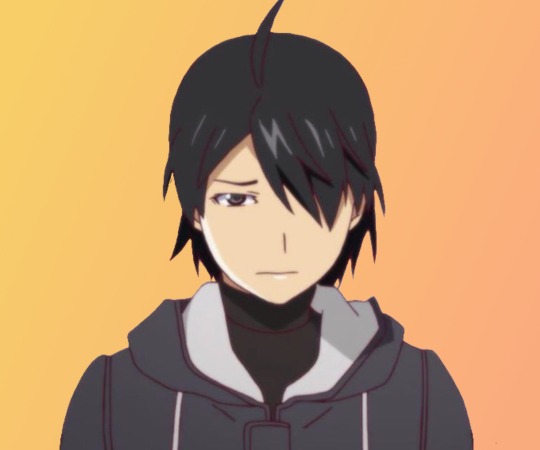
Koyomi Araragi hates people. He wants nothing to do with them. Admittedly this is just (from my interpretation) him lying to himself to avoid his loneliness, or at least justify it to himself. For those of you who haven’t read the books, two of his favorite phrases are “Having Friends would lower my intensity as a human,” and “I wish I could be a plant.” The first is self explanatory. He feels as if he’ll be ‘cooler’ if he’s the loner type. He doesn’t want to pay attention to people, because he hates growing attached. He doesn’t want the commitment to someone, or the fear of what could happen to them. He’s someone who never grew out of his shell, instead coming to embrace it, but in turn is living in a constant existential crisis as well as developing an almost nihilistic view of the world.
The plant statement is also supportive of this. He feels as if being alive is too much effort, he doesn’t want to feel stress or worry, the pain of losing people or being hurt, even if it means sacrificing the joy of meeting people and having friends. Hanekawa mentions that he picks a plant and not something like ‘Iron’ or ‘coal’ since he still wants to be alive, he wants to exist, but with minimal effort.
So how does this all come together? It shows his disinterest in people. Whether through fear, delusion or genuine lack of concern, he pays no heed to the people around him, because it doesn’t concern him. This goes back to the perception comment from the beginning. If you ignore the world around you, you become oblivious to it. Ignorance is bliss. This becomes very literal to Koyomi in that, by not paying attention to people, they simply disappear from his sight, he no longer sees them.
The only exception to this being abnormal or exceptional characters. He knew Hanekawa due to her being the star pupil everyone knew. He knew Kanbaru due to her being the star athlete of the school. He noticed Hitagi since she ‘fell from the sky’, something like that doesn’t happen normally. All of the characters in the story have an abnormal aspect to them, explaining why both he and we can see them and not anyone else.
This makes the world feel very empty and isolated. Even though it’s very clearly inhabited, the cars driving by on the streets, the shops and buildings clearly being in use in the town, functioning schools and services, the world feels desolate.
And I want to iterate, this is because that’s just how Koyomi sees it.
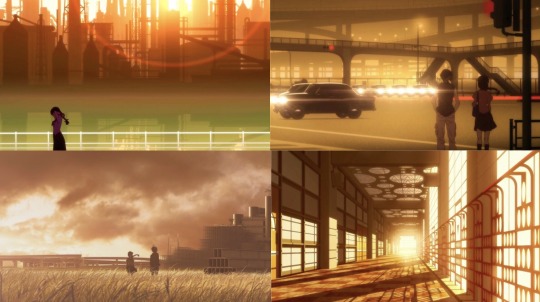
To him, these things aren’t important, they’re a mundane part of life that are as natural as the earth rotating. You don’t take note of every tree in a forest, you don’t notice every cloud that passes by, except the exceptional ones, the ones that catch your eye. That’s the mentality Koyomi has with people.
If you ask me, that’s really interesting. It makes for a compelling world design. The world itself is a direct manifestation of how our main character sees it. We are literally watching the show as if viewing it from the Koyomi’s perspective. Which is in non-literary way, a double entente. We get to see the world directly from the view of our character, making him almost a self-insert, as well as helping provide focus by cutting out the needless distractions of the world around us. It enhances each landscape, monologues feel more focused and controlled, even epic action scenes look better with the focus being on character motion instead of the visible scene and background.
So for that, I have to give Studio Shaft a round of applause. What they couldn’t carry over literally from the source material, they adapted almost perfectly. But it’s not even over. At first, this may seem a little far fetched and almost “looking into it a bit much,” but I think this is actually what the studio had intended with this, considering how different things are when we look at other characters, which I’ll discuss in my next post.
Because both Nadeko and Kanbaru show that this isn’t the way the world looks to everyone.
So look out for that post in a few days. For now, I hope you guys enjoyed this though, I think some people miss out on these finer little details when watching the show, and I hope I can provide some insight into this. I have at least one more on this idea of world design, as well as two more posts on reliability and objectivity of the narrators of monogatari.
Anyway, Take care of each other guys,
Saki~
305 notes
·
View notes
Text
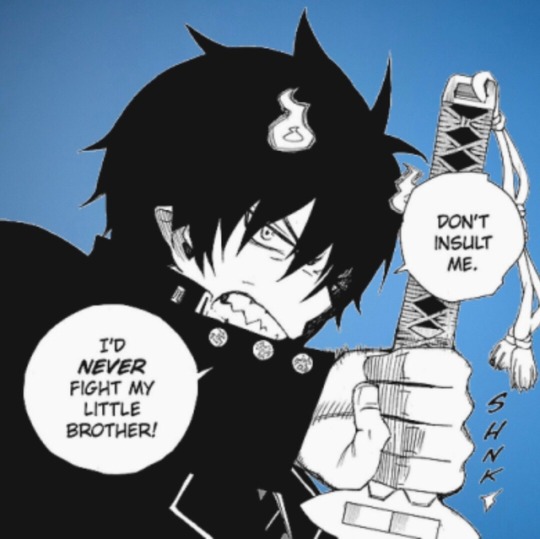
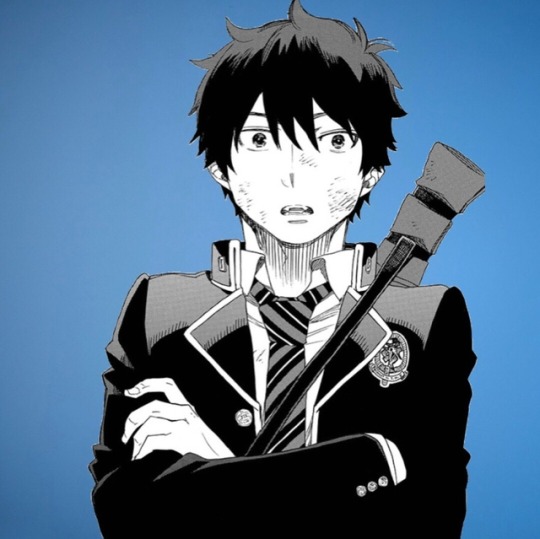
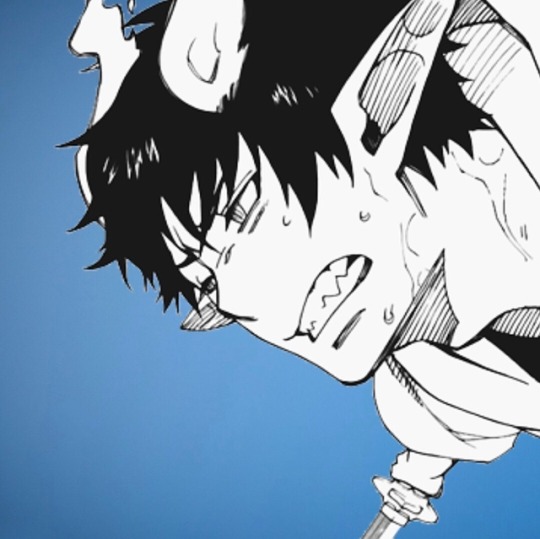
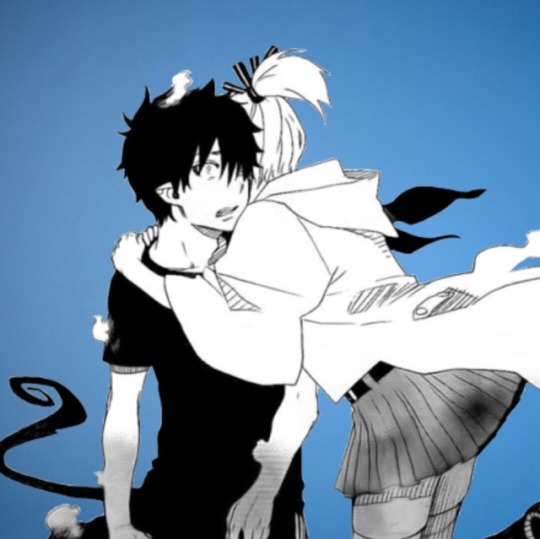



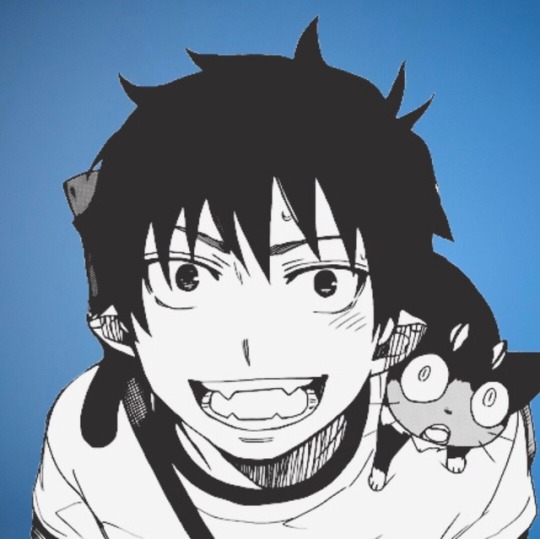
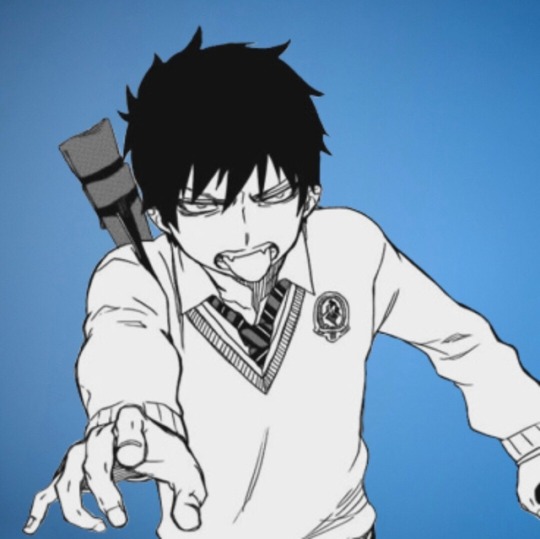
Rin Okumara - A MoodBoard(?)
A little late, but it’s been over 10 years since this came out and over 7 since I started reading it. Thanks for the ride, Devil Boy~
103 notes
·
View notes
Text
Kabukimonogatari - Shinobu Silence; Humanizing a Monster

This post is the second part of my Kabukimonogatari posts. In the first post, I talked about Hachikuji and her key scene, while in this post, I’ll be talking about Shinobu and her important scene. To me personally, this climax of the arc was probably one of the best scenes in Monogatari as a whole. This entire exchange, was so satisfyingly, unsatisfying. It left me feeling empty, and almost disappointed (which sounds like a bad thing), but that’s what makes it so great. The crushingly painful realism. This entire arc was a commentary on how even our smallest actions and decisions can affect the greater world around us. It shows how we take even the smallest things for granted, with some pretty insightful commentary on depression and being in a dark place.
So with that brief introduction out of the way. Lets talk about shinobu and her climactic scene in Kabukimonogatari. For this analysis, I’ll be potentially spoiling all the way up to episode 10 of the Monogatari second Season. Keep that in mind if you haven’t yet seen up to that point. Also, this is all just my interpretation, none of this should be taken as fact.
Ironically, this arc was the first which made Shinobu, a vampire, an aberration, feel the most human in the entire series. She demonstrates, while seeming like a transcendent being, she’s very much so susceptible to the same problems everyone faces. Jealousy, pride, depression. They affect her just as much as they would anyone else. Which was top-notch characterization for this point in the story. Up to then, Shinobu was almost an enigma, being incredibly cute and wise, but having very little going for her in terms of emotional depth (that is unless you watched or read Kizumonogatari before this).
This entire humanization is what leads to the apocalyptic events of Kabuki. Shinobu’s jealousy. Her envy for the people around Koyomi, her pride and child-like stubbornness. Most of you probably didn’t remember until it was mentioned, Shinobu was missing at one point in the story, only returning upon seeing Koyomi’s efforts to find her. She saw this as an act of mutual affection. Him searching for her demonstrated his need or care for her, so she returned the kindness by helping him with the Hanekawa situation. However in this reality, Hachikuji had never incentivized Koyomi to go search for Shinobu, prompting her to destroy the world in her solitude and envy.

And that was one of the really heart-wrenching things about this arc- It shows even that little ounce of effort is enough to save someone, or to change things, even fix things. In our case, Koyomi actively put that effort in, going out of his way instead of settling for the easy route of just waiting for her to return. Shinobu while having lived for hundreds of years, still has the mind of a spoiled brat. She felt as if it was Koyomi’s job to come searching for her. She refused to be the one that put the effort in. She acknowledges this herself- “If I had only made one tiny compromise.” She realizes that you can’t expect things to happen for you, if you’re not willing to put some effort in yourself. She comes to terms with the unreasonable nature of her actions, having created this entire situation and forcing Koyomi to search for her, to see things from her perspective. But in this alternate reality- He never did.
I feel that's a painfully accurate depiction of human emotions. A lot of the time, we expect things from people that aren’t entirely fair. We can’t always admit we’re wrong, and we’re often too stubborn to just apologize. We instead run away and blame it on everyone else. “It was his fault for not chasing me-” That’s the sort of mentality she had. And that’s a mentality a lot of people have. But this entire arc shows you have to compromise. You can’t rely on one party in a relationship to fix everything. You both must actively work towards whatever happiness you seek.
“If I’d only opened up my heart to this boy a little more, Believing and entrusting…”
It also shows a slightly nihilistic view of our actions. Running away, destroying the world was completely pointless, she accomplished nothing in doing so. The void in her heart was not filled, she was just left feeling even more empty and depressed. Had she just waited slightly longer, or better yet, compromised, she would’ve had the happiness she sought after. Which is a good message told in a depressing way. Patience is key. Don’t run away from the problem and expect everyone else to fix it. If you’re not happy with the way someone acts or a situation you’re in, you can work on improving that, even when it’s hard, time and effort will help you ultimately achieve happiness.
This was a very rough scene for me personally. Your actions aren’t permanent, but your mistakes are. Running away isn’t the end of it. Had she just returned everything would have been okay, while never returning led to the end of our world as we knew it. Her world too. She was left with nothing but regrets. “My running away from home caused me to lose you… Making me feel like I had lost a wing, A half of myself.” A quote that just goes to demonstrate her pain. Her misery at making one, small, stupid, stubborn choice, which led to everything she knew ending. Leaving her with nothing but a destroyed world and a void in her heart.
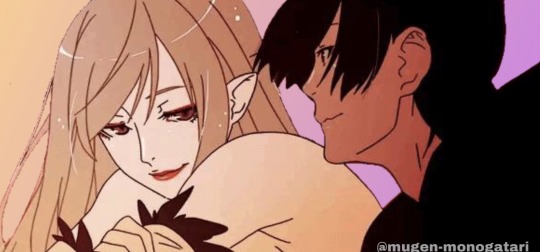
Which leads me onto my second part of this scene. Depression. I know it’s a little cliche to talk about it, but I think this is a fairly accurate depiction of it. It’s not a switch or something that happens overnight. In the case of Shinobu and most people, it’s a downwards spiral, one bad day leading to another, before they pile up. In her case, she was stubborn. Taking her anger out on the world, before realizing in feeling alone, she truly became alone. She destroyed her own life, with her own hands. As DJ Khaled once said; “Congratulations, you played yourself.”(Had to get one meme in there to lighten the mood plsdontkillme).
Shinobu feels truly alone. She struggles with the fact that Koyomi is surrounded by all these girls, forcing him to divide his attention between them all, making her feel unneeded and desperate. So she flees. She runs away with the hope that he’ll chase her, and when he doesn’t- She kills everyone. In doing so, she realizes that she truly has become alone and is prompted to take her own life.
But then upon seeing her alternate self, it becomes all so painfully clear the futility of her actions. This could have all been avoided if- you guessed it- she compromised. There most definitely was a reality where she was happy. There was a certain almost guaranteed chance that everything would be okay, had she just waited or tried to put effort in herself. It’s a very touching moment actually, when she has the tragic realization that everything she did was pointless. She had ruined everything for no reason. That there was a reality where both her and Koyomi could happily snuggle together.
While that may sound bleak, I think the real hidden message is that things get better. Life will improve, and even when it’s difficult or hard or stressful or lonely, it’s not the end. There’s a lot of people out there who suffer from very serious, very real problems, and many see no way out of it. It can be draining and scary. But it does truly get better, with some time and effort, you can make a life for yourself. It’s unfair, yes, but if you just work at things, one day you’ll be able to look back on you life and wonder why you ever even worried. I think this arc was kind of like a really really depressing way of saying- “Hey. It’ll be alright. Just stick with it. It’ll pay off, your hard work and effort will be rewarded,” which is both sweet and touching. If this was truly the author’s intentions, I have to give him kudos, since I think that’s a good message to give people.
To relate this to my own life, me and my own Girlfriend argue sometimes. Occasionally the topic of breaking up will come up, but we never do. She always puts it best saying; “I won’t break up with you because that’s a permanent decision. This argument isn’t, we’ll move on and forget about it at some point.” And I think that applies perfectly with this entire arc.

Kabukimonogatari was another fanatastic arc in an amazing series, and I’m just glad I got to experience it and share it with you guys. If you take anything away from this arc, just remember, no matter where you are in life, one day it’ll get better.
Thank you so much for reading this, if you made it this far, maybe consider sharing this with someone. Next up I’ll be doing some stuff for the Fate franchise, as well as more Monogatari character stuff, don’t forget more Bleach posts too, So keep your eyes peeled.
Take Care of Eachother, Saki~
#monogatari#anime#shinobu oshino#araragi koyomi#monogatari series#discussion#kabukimonogatari#hachikuji mayoi
72 notes
·
View notes
Text
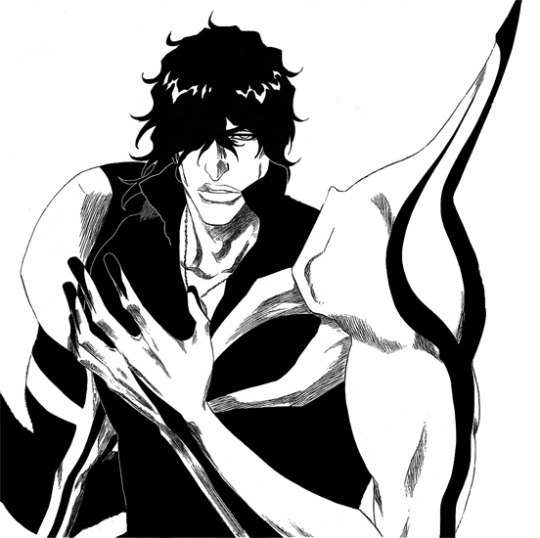
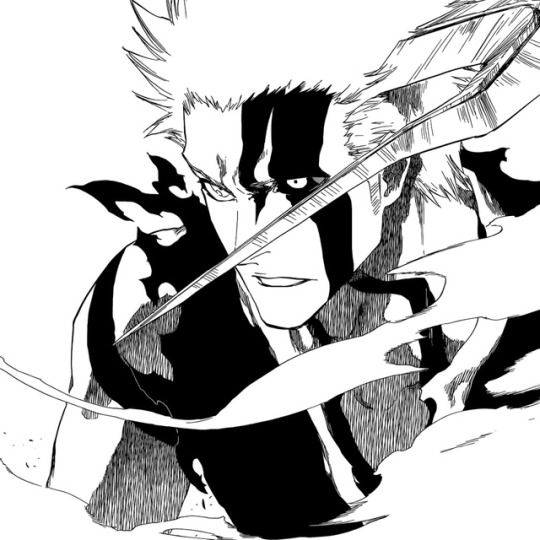



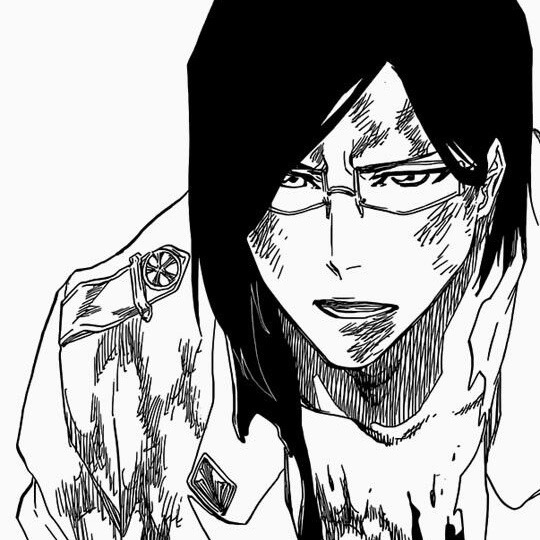
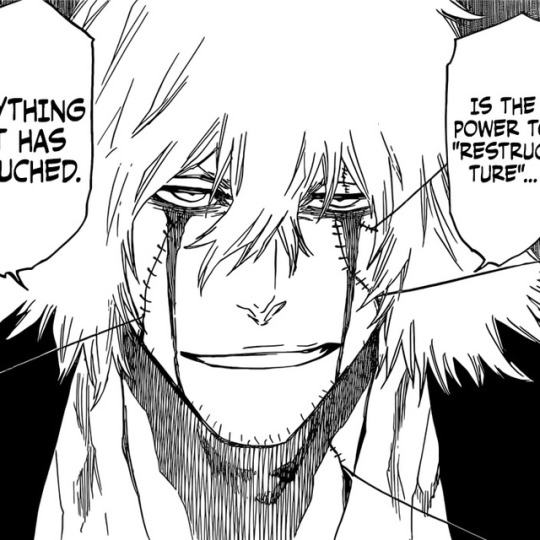


...Right until the very last.
We’re Still Bleach.
Part 2 of my Bleach MoodBoard. If you like it, let me know, more written stuff coming soon guys, don’t worry.
#bleach#ichigo kurosaki#rukia kuchiki#orihime inoue#yoruichi shihoin#urahara kisuke#renji abarai#chad yasutora#ishida uryuu
205 notes
·
View notes
Text
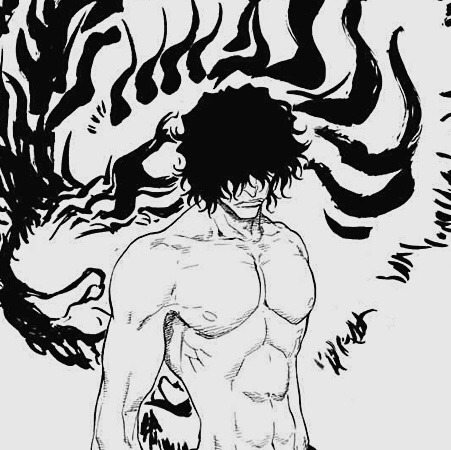

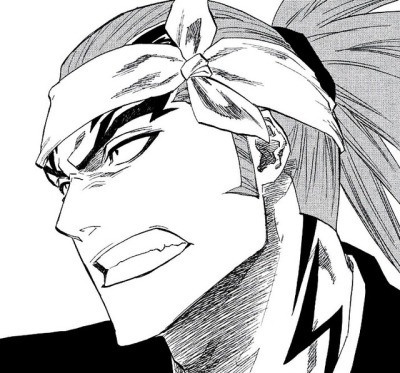
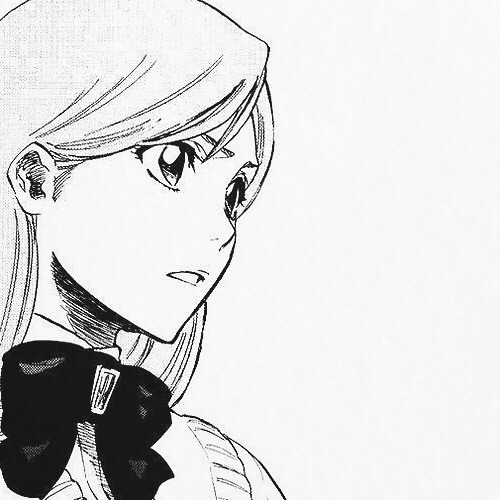

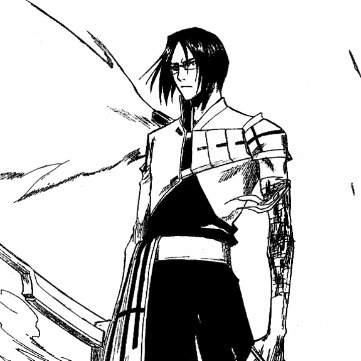
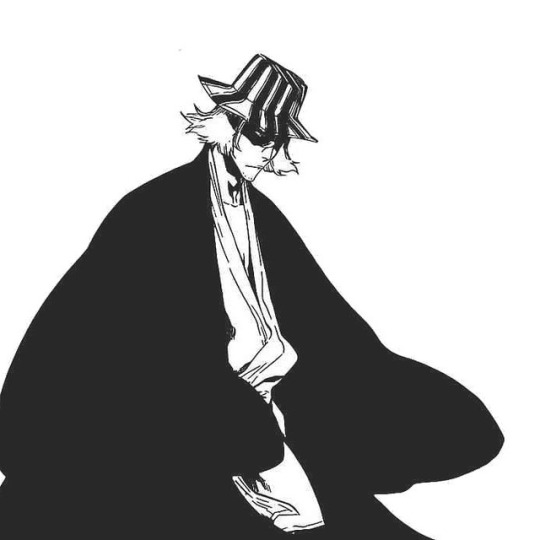

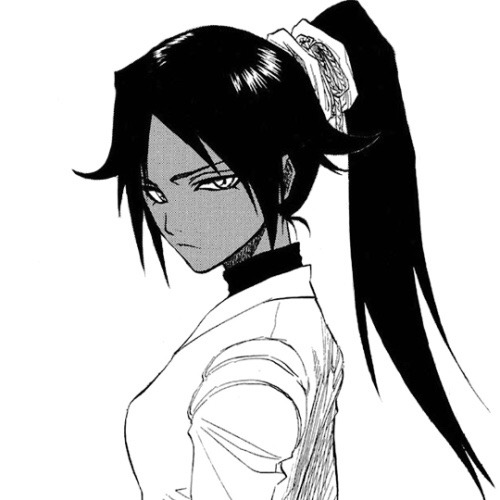
From the first day...
Part 1 Of the Bleach MoodBoards. Second part will be posted tomorrow so stay tuned.
#bleach#ichigo kurosaki#rukia kuchiki#orihime inoue#yoruichi shihoin#urahara kisuke#renji abarai#ishida uryuu#chad yasutora
167 notes
·
View notes
Text
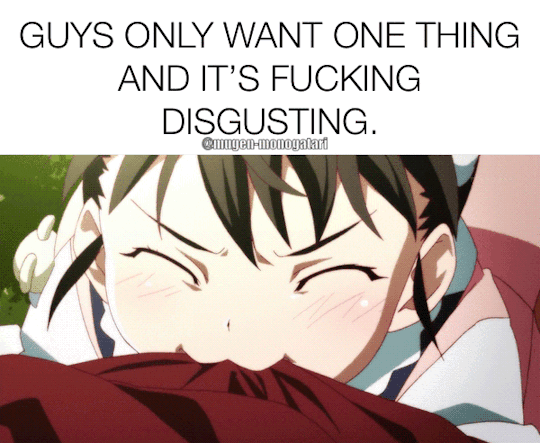
Don’t pretend you wouldn’t have a backpack Loli munching on your clothes.
43 notes
·
View notes
Photo
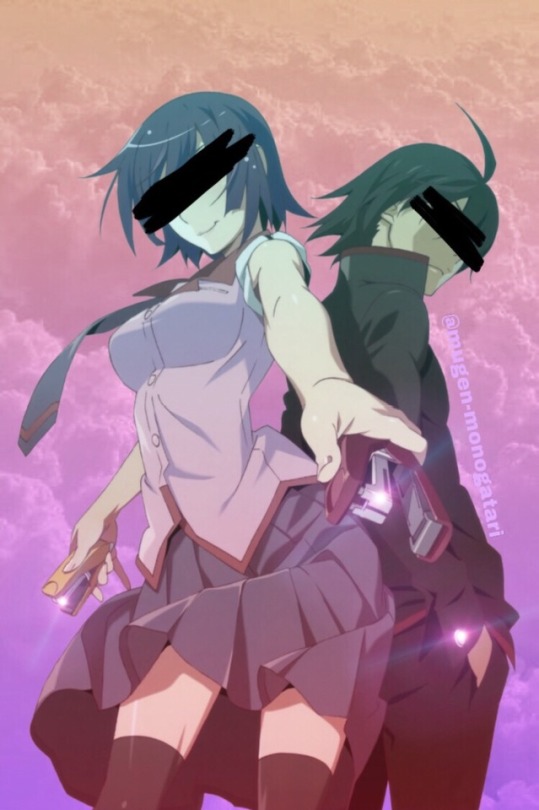
“I love you. Even if you do become a criminal and end up in jail, I’d still visit you everyday. But I’d rather be with you all the time.”
Could this be the greatest couple of all time? Who knows, but they sure are amazing. If you’re interested in more edits and monogatari content, I have more stuff on the way, so keep your eyes open kiddos.
18 notes
·
View notes
Text
5 Quality Yet Accessible Tragic Anime You Should Watch
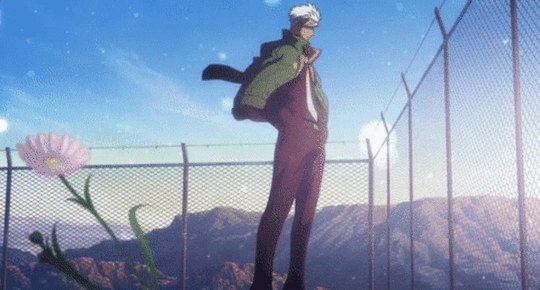
Let’s talk about tragedy in anime. Ain’t nothin’ like watching some sad anime boys experiencing sad things while I sit there and cry. I love tragedy in anime, there’s just a certain satisfaction in ‘dissatisfaction’. Sometimes, it’s far more meaningful for someone to lose a fight, to make a hard decision or sacrifice something. Maybe the hero never saves the girl, or a loved one just doesn’t make it. Yes, in a perfect world everyone ends up happy, but this isn’t a perfect world. People suffer, and sometimes it ends on a good note, sometimes everything goes to hell and the world burns. That gritty realism and human error adds a level of empathy and depth to many shows that would otherwise lack it. I personally think it’s worth talking about that, since I don’t think tragic anime get enough love.
So I thought I’d make a quick list of 5 accessible yet Quality tragedy series, ranging from pretty popular and accessible, to slightly more niche. Many of you have seen these series I’m sure, but with the continuous stream of shows being released every single season, it can be hard to either go back and watch older shows, or stay on top of newer ones. These are just a few picks that I would urge anyone and everyone to go and at least try.
I should also preface this by saying, when I say tragedy, it doesn’t mean the show has a depressing ending. By tragedy I’m referring to tragic events happening in a show regularly, be it at the end, the beginning or throughout. Simply putting something on this list, doesn’t mean it has a tragic ending, so you can rest assured there are still surprises to come when watching these.
Also, these are all my opinions, everyone is entitled to them. You can disagree or agree, it’s up to you, we can even discuss my peeps. Just don’t brutalize me for shows you don’t like or if one of your favorites isn’t on this list.
All of that being said, Here are 5 tragic series I think everyone should at least try:
1. Code Geass
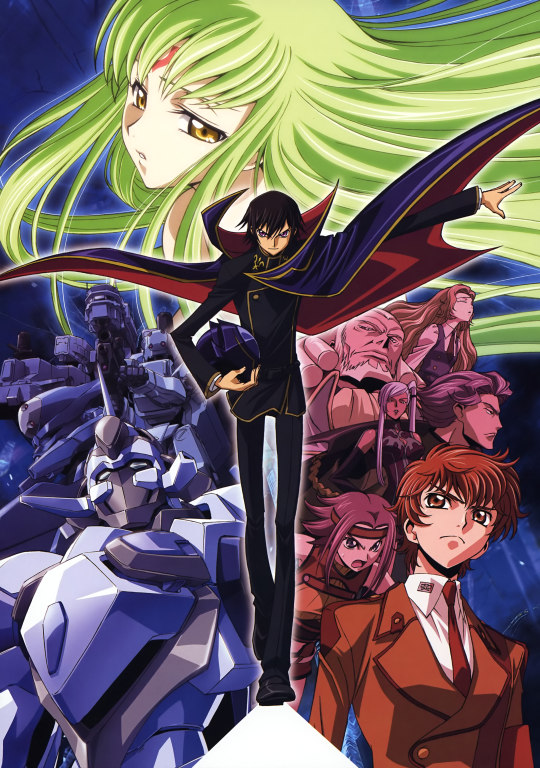
Starting off simple we have Code Geass. What a show this was back in the day. Death Note, mixed with Mechs and sci-fi and chess and a whole lot of edge. For many people, they have already seen it, it’s almost guaranteed if you watched anime in the early 2000s. However, as time goes on, this series slowly falls into obscurity, many people being less attracted by its flamboyant art style and the ever growing age. It seems like Code Geass is slowly fading away with time, people online aren’t forgetting about it, but moving on, and many new fans are understandably detracted from a show like this.
But they’re all wrong. This series is incredible. It’s a fundamental “must-watch” show. Sure, it shows it’s age now, but that doesn’t detract from it’s plot and characters. With a very likeable cast, a constantly expanding story, high stakes, insane powers and mind games, politics and action, all of these make an insanely good series, one that warrants repeated viewing to this day. What starts as a boy being in the wrong place at the wrong time, blows up into a worldwide conflict. This is one of those series that sticks with you, there are scenes and moments in this you just never forget moving forward.
Some of the things I love is Sunrise’s mech designs, Lancelot as well as many of the Knightmare frame designs in the movies and show are still fun and vibrant to this day. Many old Mecha shows become redundant years later as the designs don’t hold up. This one though, certainly does.
I also really love the voice acting. Yes the sub is good, but the dub (fight me) is just mwah. Johnny Yong Bosch as Lelouch is nut worthy. Just watch the first episode where he gives his first command. Insta nut. I’m telling you.
I also love the endings of both seasons. I think the first is a really good climax, while the second season closes about as well as this could, while still coming out of left field.
Some things that I think detract people, definitely start with the art style. Sunrise’s designs for the machines and backgrounds and such is fine, it looks good, however Clamp’s character designs are definitely an acquired taste. They’re not for everyone. Everyone looks super slender, almost cartoon like in their clothes and proportions. Yes you get used to it, but they still look very “different” to the standard, even back when it first came out.
Another is sometimes, the show just goes to very strange places, for example having an episode to do with drug addiction that just came out of left-field. In the same vein, some people have very mixed opinions on season two, not entirely liking the direction it goes and some of the character developments. However, a lot of these things are subjective and I’ll leave them up to you to decide.
Spanning two, 25 episode seasons (you can definitely just pretend the movie never happened) as well as several spin off OVAs and Shorts (Those you actually can watch though), the series is a pretty long watch by today’s standards, but it’s definitely worth it.
2. Zankyou No Terror
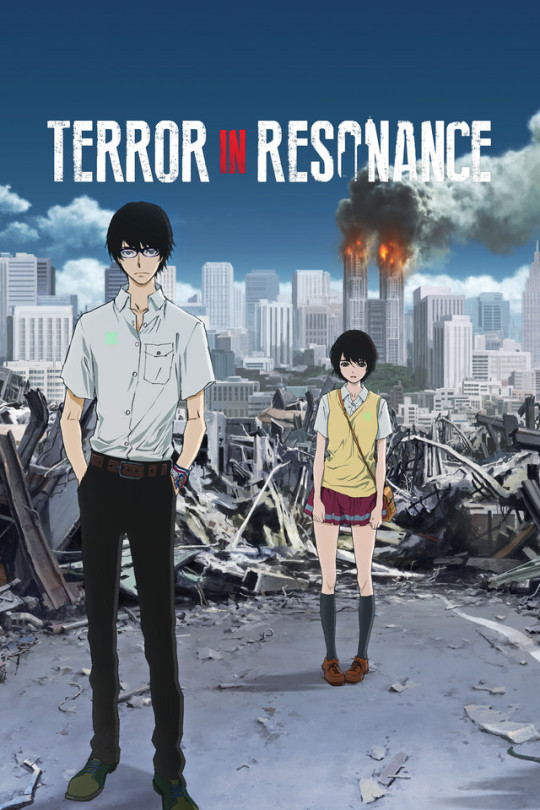
Next up, we have Terror in Resonance. This one for sure is worth the watch even without the tragedy. This is one of those shows, which is so visually appealing to watch. It’s one of the most aesthetically pleasing shows I’ve ever seen. I guarantee anyone who’s interested in aesthetic gifs and images of weeb stuff, has seen shots from this show without even realizing it. It’s not exactly a niche show, but it’s a little less accessible than something like “Angel Beats”, with a much more serious and gritty tone. It’s not criminally underrated, but I just really wish more people had seen this, since it genuinely is a beautiful series.
Some of the things I really love about this show, is (as I’ve mentioned a thousand times) the aesthetic sense. Every shot in this series is screenshot worthy, with plenty scenes making for ‘straight-out-the-box’ gifs and icons and whatever it is you kids use screenshots for. Even the food, just like papa Gigguk mentioned, is just mwah, spicy stuff. I attribute this to the very well considered color palette, realistic lighting and designs, as well as just overall good cinematography.
On the less visible side of things, the story hold ups really well too, with some very genuinely emotional moments and scenes. Just like Code Geass above, this series has a very well considered ending, with a “Wholesome”(?) message at the end.
The only negatives I can really give for the series, is some pacing issues if you’re an impatient brat like me, as well as almost a complete lack of lightheartedness. The series can be sweet and touching, but it’s almost always dark and serious at the same time, with no time to relax or breathe throughout.
I think there isn’t as much to say about ZnT as there is about Code geass, as it’s not as subjective. It is an objectively high quality show, your own enjoyment of it is what varies. Unlike Code Geass, there isn’t many flaws, but it doesn’t take as many risks. To me, this show is a very safe bet. It looks gorgeous, is only 11 episodes (you big boys and girls can binge that) and tells a satisfying, self-contained story. A little bonus is that it’s directed by Shinichiro Watanabe, famous for Cowboy Bebop and Samurai Champloo, so hey- It has that going for it too.
3. Parasyte: The Maxim

Following on, we have one of the series that introduced me to tragedy, Parasyte: The Maxim. Let me tell you, this series is dark. And violent. Very violent at times.
When it first aired in 2014, the response was pretty good, it didn’t reach critical Acclaim, but had its own cult following, with the manga having been published from the late 80s to the mid 90s. For me, this was one of my first truly “darker” and more violent anime, having really only watched shounen and some seinen before that. This to me isn’t one of the best stories ever, the characters are fine, and the show looks acceptable. But while it doesn’t excel in anything, it does everything really well. To me, it’s the perfect bridge from Casual fan, to serious- or even as a primer for more dark and violent stories, such as Berserk or dare I say it Tokyo Ghoul (Read the manga, please don’t support the anime adaptation).
For me personally, I really Liked the main character, he drove the show on for me. Watching him develop into someone completely different from the beginning of the show, was a real draw to me. He’s likeable, relatable to an extent, and he had a complete character arc. Shinichi in the beginning is not the same character as in the end.
This character is also used to convey a deeper meaning about what humanity is and how we define the term. It’s a really interesting series about us as a race, with some genuine things to discuss and think about, which leaves a longer lasting impression than most shows. It’s the sort of series that makes you want to share it with other people just so you can talk to them about it. Ah- and it’ll hit you in the feels. This show is genuinely tragic through out, but still stays personal to the small cast, which to me, is the sign of a really good tragedy. Despite things going on in the entire world, they make you care about these few people specifically.
However, it has it’s own problems too. Art wise, it’s very faithful to the original source material, capturing the feel of it, the low key oppressive vibes. However, this also means, it can look a little… ‘Bland’? At times. The earthy colors can be a little drab, especially in an age were Studio Trigger, for example, can make an eye-gasm worthy scene using colours you didn’t even know existed.
The other problem, is some of the characters are very one dimensional. Take the love interest, she doesn’t really develop or change at all throughout the series, but I personally give this a pass as she’s not super relevant to the story anyway.
A fair warning though, this series has some strong violence, plenty of gore and mutilation, if that’s a problem for you, I suggest either giving this one a skip, or just trying to sit through it. It’ll be a good learning experience.
Spanning a fair 24 episodes, having aired in 2014, this series is both bingeable, and holds-up very well in the modern ecosystem of anime. To me, this is a pretty top tier show, a solid 8/10, it’s very good, a really well made show, It makes for the perfect bridge into far more serious and dark stories, such as maybe Berserk and Devilman, hence why I put it on this list.
4. Fate/Zero
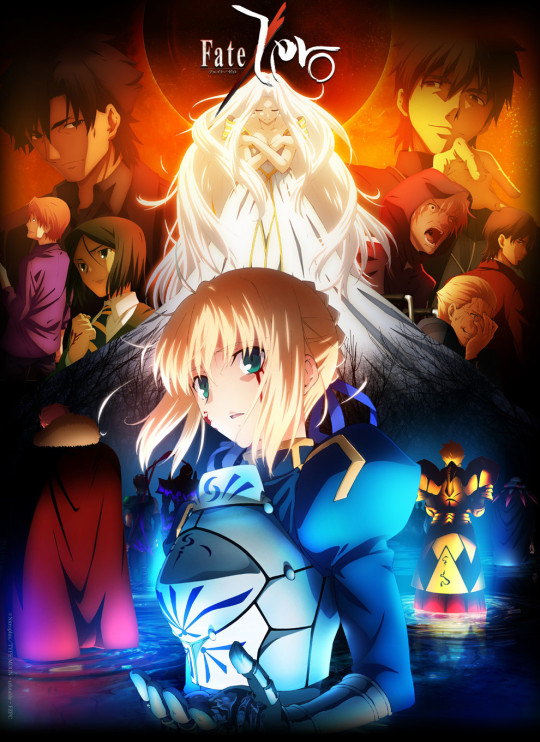
For my second to last show, perhaps one of the most well known franchises, that is lowkey kinda niche. Fate is a series everyone knows the existence of, but not as many people have actually watched, especially not casual fans. To be frank, it’s intimidating. The series has no real easy entry point, and all the timelines are relatively interwoven, you can’t just bounce around. Everything spoils everything and it’s scary to even look at a list of fate entries.
That’s why I picked Fate Zero. To me, it’s the best entry point into the Type/Moon genre. For those of you who don’t know, it’s basically a battle royal between seven summoners who each have a servant of different classes. They all have to fight for the Holy Grail, an artifact that will grant them a single wish. Sounds simple right?
Well it’s not. The entire series is full of not only badass action, but plenty of mind games and ‘cat-and-mouse’ between the characters. It’s brutal, it’s tragic, violent and uplifting. Ufotable delivers some of the highest quality animation you’ll see in your life (they’re renowned for it), but it doesn’t just look good. The story is compelling, the characters are genuinely likeable and by the end, I wanted everyone to live and survive. Everyone has believable and compelling motivation, and even the objectively evil characters, like Caster, are still likeable, because you begin to love to hate them. The entire season honestly plays out more like a compressed microcosmic version of Game of Thrones, than a battle royal anime.
There are plenty of things I like about this series, the plot is really fun, the fights are pretty damn cool and it can be a very emotional show at times. I could talk about these aspects endlessly. However, the thing that really makes Fate for me, is the characters. Each individual characters gets some time and attention, and with the exception of a few, you really genuinely like and care about everyone. You want everyone to win, or at least survive, since all of them are either genuinely lovable, or have very compelling motivation.
The other part to it is, this is the best starting point for the rest of Fate, and I would actually argue that it enhances many scenes found in the subsequent (story wise) series, even if they aired prior to Zero. This series both introduced me to Fate, and got me attached and invested in the world, which is the sign of a good (technically) first series.
On the other hand, it has problems. First of all, it’s pretty interwoven with the later series. Those came before it and set up a lot of mysteries and ideas that Zero goes out of it’s way to explain, from character identities to events in the timeline, watching Zero will spoil a lot of those things, which may lessen the later experiences for some people.
The other flaw is despite being maybe the best starting point for Fate, it still isn’t entirely accessible. The show can be straight up confusing at times, at least for someone who hasn’t seen Fate. Many elements of the world aren’t explained and you’re just expected to go along with it, since it’s either just a part of this world, or explained in other series. Which is fine, but often lead to some rather “But wait… What just happened?” moments.
Ultimately, Fate/Zero is fantastic series for anyone looking for a really good character drama, full of magic and badass historical references. It’s not the best introduction but it’s the best you’ll get from Fate. Similarly to Code Geass and ZnT, the series has a really good conclusion in my opinion, with plenty of tragic moments sprinkled throughout.
For Fate, Zero specifically consists of two seasons of 12 episodes each, for a bingeable 24 episode series. For ideas where to go next from this, look for my upcoming Tumblr Post explaining the fate continuity.
5. Mobile Suit Gundam : Iron-Blooded Orphans
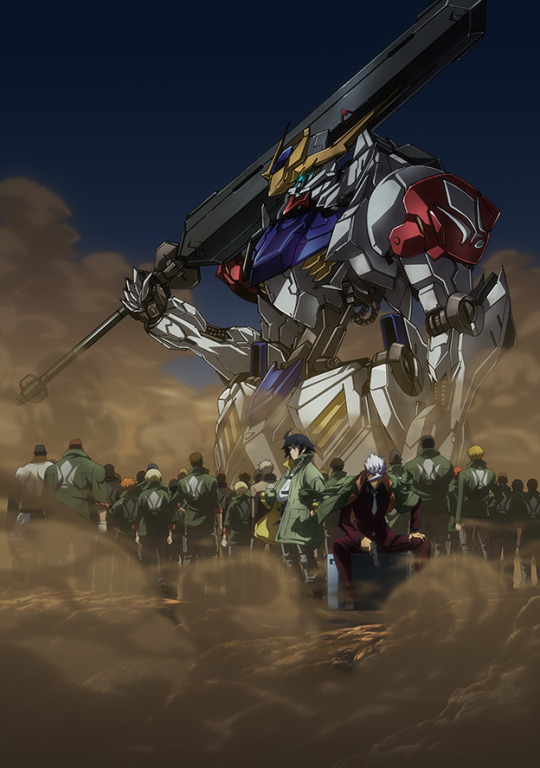
And Finally, we come to our last pick of the day. This is a series, I would urge anyone to watch. If I could make you watch one Single series from this list, this would be it. Throw away any views you have on the franchise or the genre, don’t be afraid of the name, just give this series a try.
Iron Blooded Orphans follows a small mercenary band of boys who just want to make a home for themselves in a galaxy strained by political unrest. The premise is simple, just people trying to survive and make a life for themselves.
Well what if I told you it was directed and written by the same Duo that made AnoHana, one of the most commonly acknowledged tragic shows out there. This duo write and direct stories about innocent children being put through immense hardship and this series is no different. This show is tragic, painful even. I sobbed as many times as I laughed and smiled in this show. We spend a season watching them come up in the world, only to watch everything get torn apart in the second season, and it is genuinely emotional and heart wrenching.
Something I love about this series, is the characters and how attached you become to them. Death is a genuine threat in this show, even if you don’t feel it in the beginning. When people die, it hurts, and that applies to IBO, where each death leaves resounding ripples on the people around them. It handles familial relationships really well, making you believe in these people and their emotions. When they suffer, you cry for them, and when they get brief moments of respite, you do too. I love how invested you become in this ragtag team of boys, making some of the later scenes all the more devastating when they happen.
Another thing I love is the stakes. Within the second season, the pressure to perform is on, the first season, while having threats and such, was never even close to season two. To be vague, one of my favorite moments is when a character has to land a decisive shot in the midst of a battle, and everyone’s lives are on the line. That entire confrontation is one of my favorite scenes in anime of all time. It is truly suspenseful and will take you on an emotional journey.
To top it all off, it’s made by Sunrise. If you like Mechs, well oh boy do they have you covered, and if you don’t- well oh boy, you will when you’re done. This show makes the mech Genre, and Gundam entirely accessible, you need no prior knowledge, you don’t need to be a fan to enjoy it. The fights are really fun and have genuinely cool moments, as cool as it can get for a mech anyway. The characters and story are well written and everything just comes together to make a very well produced show- Good job Sunrise.
It doesn’t go without it’s own problems though. The first 20 ish episodes, until they get to earth, are not pointless, but have some pacing issues, as well as low stakes. There are threats and people die, but you never feel that scared or intense. Then towards the end of season one, the show kicks into high gear. To counteract this slow start, the series has a phenomenal season two that I genuinely believe everyone should watch, as it’s a perfect example of character drama done exceptionally well.
The series is comprised of two seasons of 25 episodes each, totaling a measly (if you’re a big boy or girl) 50 episodes. There is several related forms of media, nothing worth mentioning though, for more Gundam, you’re better off watching other series from the franchise.
If I can only force you to watch one, please go out and watch Iron Blooded Orphans. To me, it’s 9- pushing a 10/10 series, with a undeniably slow start, but a fantastic heart felt, emotional ending.
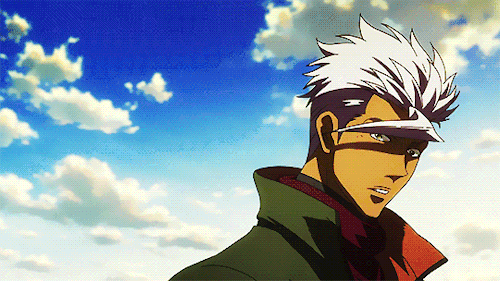
So that’s it from me guys. Thanks for taking the time to read the ramblings of a mad man like me, but I hope this gives some people some ideas on where to go next or what they can watch now. If you enjoyed, make sure to follow me for more discussions and lists and whatever else anime related. If you have any advice, or want to discuss something with me, go ahead let me know, other than that- Leave, go outside, get some fresh air after reading all that.
49 notes
·
View notes
